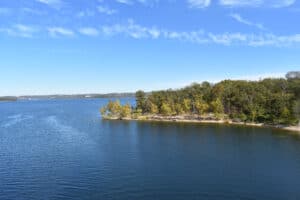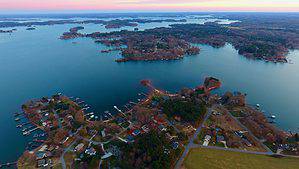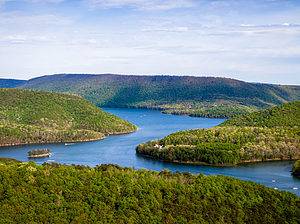The United States boasts hundreds of impressive lakes, with some being the largest in the world. Lake Gaston is a freshwater reservoir that has become a popular destination for visitors seeking incredible views, enticing activities, and diverse wildlife.
This article uncovers the depth of Lake Gaston, along with other interesting information regarding this scenic lake.
How Deep Is Lake Gaston?
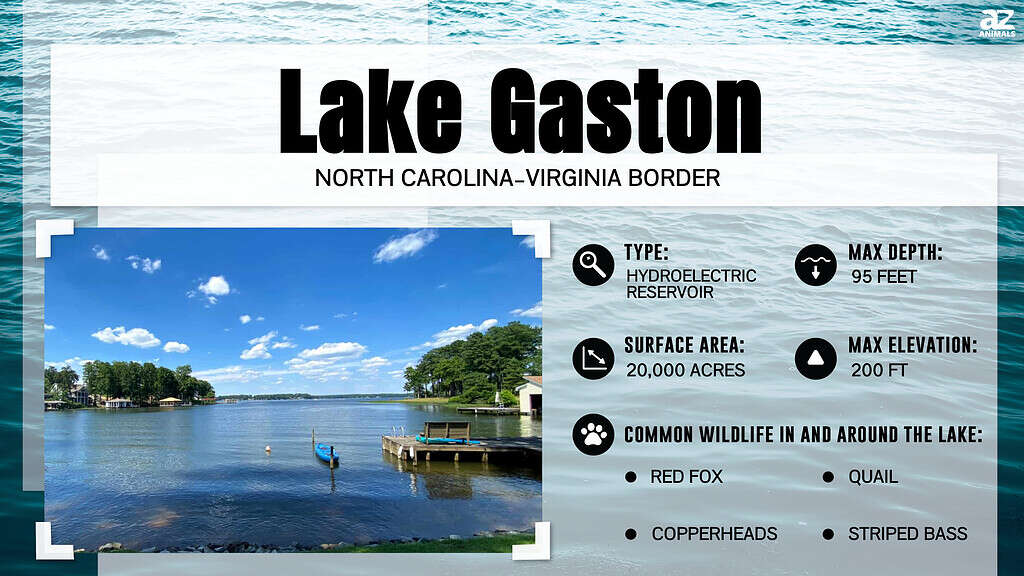
Lake Gaston is a freshwater reservoir along the Virginia and North Carolina border in the eastern United States. The lake is fairly large at about 35 miles long with 350 miles of shoreline.
The exact depth of the lake varies, as some sections are deeper or shallower than others. The average depth is around 40 feet, but the maximum depth is 95 feet. Some areas of this lake, usually near the docks, are only 1 or 2 feet deep. Those areas are popular with anglers for the abundance of catfish and crappies. The middle sections of Lake Gaston are usually the deepest.
Where Is Lake Gaston Located?
This reservoir is located along the North Carolina and Virginia border in the United States, covering at least five counties. The lake borders Halifax, Northampton, and Warren counties in northeastern North Carolina, and Brunswick and Mecklenburg counties in southern Virginia. You can find Lake Gaston between interstates I-85 and I-95 on a map.
Lake Gaston is found below Kerr Lake, which supplies water upstream. Lake Gaston is connected to the Roanoke Rapids Lake flowing downstream. The public access point Day Use Area is located at 2369, Jack Brown Road, Littleton. This is around the dam area and just before the Roanoke Rapids Lake South Channel. You can find the fishing pier, grills, picnic shelters, kayaking, and public swimming areas through the Day Use Area.
How Did Lake Gason Form?
The man-made hydroelectric reservoir formed in 1963. Dominion Energy, formerly the Virginia Electric and Power Company (VEPCO), owns the lake. However, they do not own the waterfront.
Lake Gaston was formed when Dominion bought the farmland across the Roanoke River in the 1960s and built the Gaston Dam. The lake was originally intended to generate hydropower as a single-used reservoir, but it was soon used as a water supply for fast-growing Hampton roads. Dominion controls the lake’s elevation as required by the Federal Energy Regulatory Commission (FERC).
What Is Lake Gaston Known for?
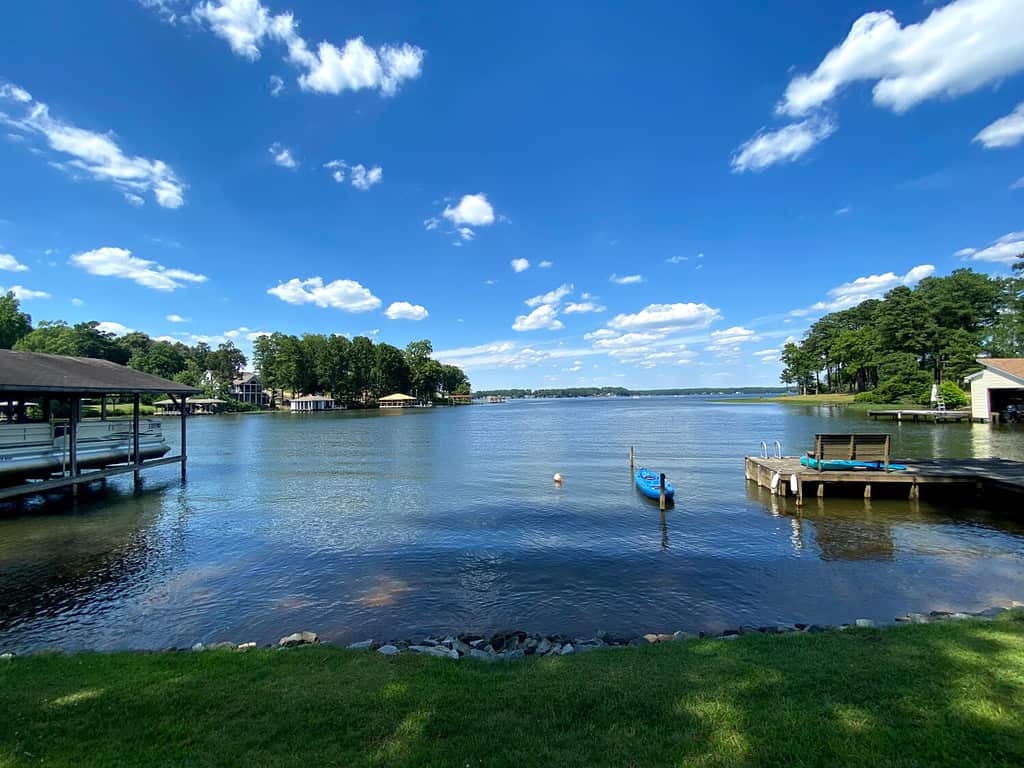
At about half the size of Lake Kerr, this body of water is fairly large.
©KHilliard/Shutterstock.com
Lake Gaston is known for being one of Dominion’s hydroelectric power generators, a drinking supply for nearby communities, and a destination for several recreational activities.
The City of Chesapeake and Virginia Beach chose Lake Gaston as a water source after decades of planning and a water shortage from rapid population growth. Nowadays, the area is a great destination for a beautiful picnic, kayaking on the waters, fishing, hiking, and camping. There are also several nearby vineyards worth visiting and a small island that boating families enjoy.
The picnic shelter is highly sought after but has a 40-person capacity. You can view incredible sunsets and sunrises from the designated picnic areas, the piers, or the lake intself.
Animals Found in and Around Lake Gaston
Lake Gaston is home to various wildlife, ranging from fish, birds, minks, groundhogs, deer, copperheads, and red foxes. Fish seem to be the most captivating wildlife, with the following fish species residing here:
- Channel catfish
- Black crappie
- Bluegill
- Chain pickerel
- Walleye
- White and largemouth bass
The photo featured at the top of this post is © iStock.com/Dee
Thank you for reading! Have some feedback for us? Contact the AZ Animals editorial team.




